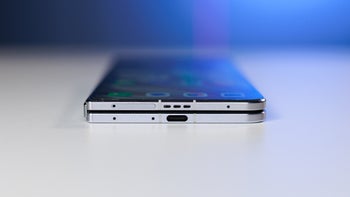Report says that the seventh-generation Apple iPad will keep three old features

On March 25th, Apple is expected to hold an event that will include the introduction of its new subscription-based Apple News service. We also could see the AirPods2 unwrapped as well. And based on certifications from the Eurasian Economic Commission (EEC) and the Bureau of Indian Standards (BIS), Apple will probably show off the seventh-generation Apple iPad and the iPad mini 5.
The rumors surrounding the iPad mini 5 call for the tablet to be the exact same device as 2015's iPad mini 4, except with a newer chipset inside. The latter is powered by Apple's A8 SoC, which was used on 2014's Apple iPhone 6 and iPhone 6 Plus.
The big questions surrounding the seventh-generation iPad revolve around the specs. While Macotakara reports (via Tech Radar) that it was told by a supplier that the screen will be hiked to 10-inches, others say that it will remain the same size as all previous generations of the iPad at 9.7-inches.
Some were hoping that the next iPad would do away with Touch ID and replace it with the Face ID facial recognition system, but the same supplier who told Macotakara about the 10-inch screen size says that the tablet will come once again with the Touch ID fingerprint scanner. And that means that the new iPad will continue to have a home button. However, the source says that the the tabler will still be equipped with a 3.5mm headphone jack. That will please some consumers who have seen the port disappear from the iPhone and on many Android phones as well. According to TF International's Ming-Chi Kuo, considered to be one of the top Apple analysts, the new iPad will stick with Apple's proprietary Lightning port instead of making the switch to USB Type-C.
Last year, Microsoft launched its Surface Go line to compete with the iPad
So it would appear that outside of possibly making the iPad's screen larger, Apple is content to keep the status quo for the next-gen iPad. This differs from the strategy Apple employed last year for its upscale iPad Pro. The two newest models (11-inch and 12.9-inch) were launched late last year, and are equipped with an edge-to-edge display, thinner bezels, Face ID (including the TrueDepth camera) and a USB-C port.
Apple's lower priced iPad tablets started to face new competition last year when Microsoft launched its Surface Go tablets last summer. These slates are equipped with a 10-inch display (hence the rumors about Apple expanding the screen size for its new iPad) with a 4415Y Intel processor under the hood. The tablet is offered with 4GB/8GB of RAM with 64GB/128GB of storage. Running Windows 10 in S mode, the line is priced at $399 and up.
Meanwhile, the overall tablet market continues to struggle, although demand is growing for tablets with larger screen sizes. One analysis calls for shipments of 141 million units this year, followed by declines of 2.3% annually from 2021 to 2023. Part of the reason for the tepid tablet market is the increasing screen sizes found on smartphones. And as the foldable handset market takes off, possibly as soon as next year, these devices will probably cut into the demand for dedicated tablets.
Apple created the category with the April 3rd, 2010 launch of the iPad. Data from Statista shows that for the third quarter of 2018, the iPad had 26.6% of the global tablet market. That was down sequentially from the 34.9% share Apple had in Q2 of 2018, but up year-over-year. During the third quarter of 2017, the iPad owned 25.8% of the market. For the second quarter of 2012, Apple still had a better than 60% slice of the pie.
Follow us on Google News












Things that are NOT allowed:
To help keep our community safe and free from spam, we apply temporary limits to newly created accounts: